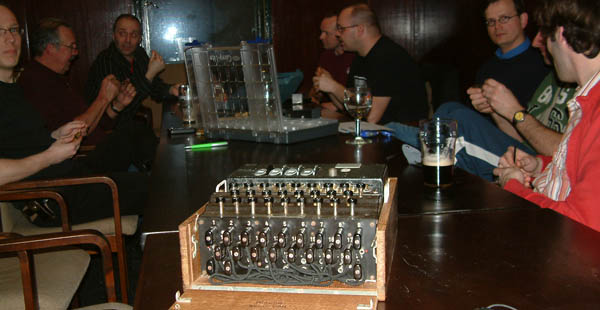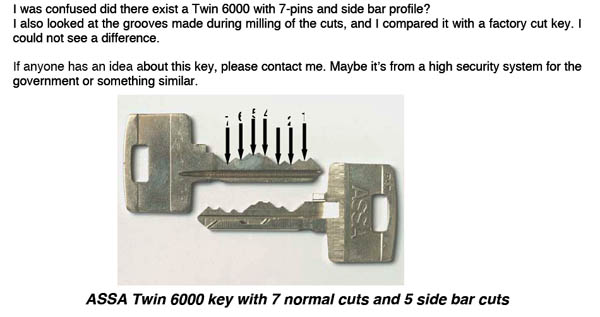Well … I did not actually pick the lock. I used simplified impressioning to create a working key.

The nice thing about Toool is that it attracts interesting people. Some of these people come to learn about locks and lockpicking, others come with interesting lock related problems.
Last Tuesday’s Toool Eindhoven meeting was no exception. It was the day someone (who wants to remain anonymous) brought an Enigma machine and wanted me to make a proper key for it.
For those unfamiliar with the enigma: it’s a (by now) famous encryption device used by the Germans during World War II (wikipedia).
It is pretty rare device, and the most common place to find one is in a special museum or in history books. Yet someone brought one to a Toool meeting and gave us all the opportunity to have a close look.
The reason the machine was brought to Toool was because the key was missing. The only thing the owner did have was a key from a different machine that worked on the lock once.
For me it was a great advantage to have a key that is known to work at least once, as it would make my job a lot easier …

Under normal conditions I would just remove the lock and examine the levers to cut/file a proper key. However, at this device all screws were still sealed with a special kind of paint. The owner of the box was real keen on keeping this seal intact, and I can’t blame him for that. One other security feature that caught my eye was that the lock had the serial number of the device stamped in the housing.
My approach to make a key was relatively simple. I knew from emailing with the owner what type of key to expect, and came prepared with a range of blank keys.
At the club I filed one of the blanks down to same hight as the key he brought with him, except on my key all cuts were about one millimeter higher.

After filing this key, I used a marker to ‘paint’ the surface of the key red. When the ink dried, I inserted the key into the lock and gently tried to turn it. It did not rotate all the way, but already opened the lock!
Looking at the key I found that the ink was scratched on two positions. Filing down these two positions a little made the key fully turn and operate the lock. Still one more round of filing was needed to make the lock operate smoothly.
Maybe under normal circumstances no big deal, but the uniqueness of this device made it very memorable for me!
And I sure was happy and relieved it went so smoothly.
Of course we had many questions for the owner of this device. The main question was where he got it, and how he managed to get it. His answer sounded somewhat familiar: By writing on the internet about various encryption devices, and publishing about reverse engineering some of them, he became a known source of interesting and rare information. And because of his high google ratings on scrambling devices, he came in touch with lots of other people who share the same interest. Someone who owned an enigma machine contacted him because of these publications, and offered it for sale. The rest is history….
This approach shows interesting similarities with how we run Toool. We too benefit from the fact people know to find us because of our various publications and known expertise.
Of course we wanted to know if other kind of locks were known, and we learned only Naval Enigma machines were equipped with locks. The standard naval ‘three wheel’ device even had two locks. The one brought to Toool was a special ‘four wheel’ enigma used in submarines.
Worldwide around 200 of these machines are known to still exist. Around 30 to 50 are four wheel naval ones. And we were all pretty pleased to have one of them at Toool Eindhoven! (like Walter, Jos and Geert-Jan)
A nice software version of the Enigma can be found here http://users.telenet.be/d.rijmenants/
(and sorry guys, I did not manage to ‘crack’ the messages in the previous comments with it)










